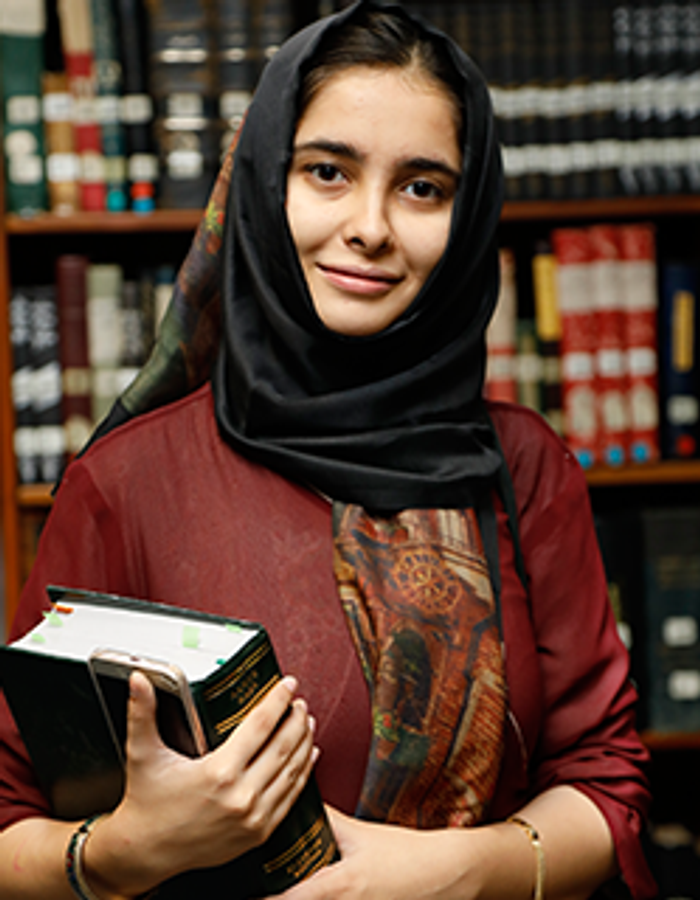The impact of organising digital engagement around a single event

How a major grantmaker and a grassroots charity are helping to ensure that education systems can prepare every child, everywhere, to thrive in an increasingly complex world.
STiR Education is a grassroots organisation whose vision is to create a world where teachers love teaching and children love learning. Since 2012, they’ve reached 200,000 teachers and 6 million children across India and Uganda. With such tangible impact, it is no surprise then that they have the support of a significant grantmaker, UBS Optimus Foundation whose work enables investment in breakthrough solutions to pressing social and environmental issues. We are going to explore STiR Education’s learnings from their experiment in event-based social media campaigns in more detail later on. But, first, it’s important to understand how they were able to expand their digital communications in this way. Experimenting is usually something costly in terms of time and money - so grassroots organisations are often not in a position to do this. Cue a dedicated grantmaker…
UBS Optimus Foundation is one of the increasing number of Foundations and Philanthropists who aren’t interested in purely transactional grantmaking. They know that in order for their investments to have the biggest impact they need to listen to the organisations on the ground, to get a thorough understanding of what they actually need.
Following a taster week for a group of their grantees, UBS Optimus Foundation identified that there was a real and urgent need among their grantees to develop their in-house digital skills. They understand that there is a huge opportunity to allow the amazing organisations that they support to connect with a wider audience, raise more awareness and funds, becoming more resilient in the process. They selected 29 of their grantees from 16 countries to undertake the six-month BRIDGE programme, with the goal that at completion, each would be able to:
- Define a clear digital strategy
- Effectively communicate to their audience
- Ultimately raise more unrestricted funding
Importantly, UBS Optimus Foundation is dedicated to building the long-term capacity, resilience and strength of their grantee partners. They were not looking for a transactional and traditional grantmaking programme, but a meaningful and proven methodology for driving long-term sustainable change within the nonprofit sector.
Events-focused digital campaigns: a case study
STiR Education celebrated their 10-year anniversary in the summer of 2022 and they used this as a key opportunity to put into practice what they had learned in the BRIDGE programme. They created a multi-channel campaign to showcase all the achievements of the last decade, to reach new audiences and promote deeper engagement with their existing community. They were testing the theory that focussing digital campaigns around an event or occasion can help drive engagement, new audiences and awareness.
Goals:
- To experiment with lots of different approaches
- To Identify what works for which audiences
Activity
- Pre-event:
- Warm-up posts
- Posted the story of their journey over the years
- Posted about the event every day, during the week of the event
- Post-event:
- shared quotes from stakeholders,
- pictures and videos from the event.
Outcomes
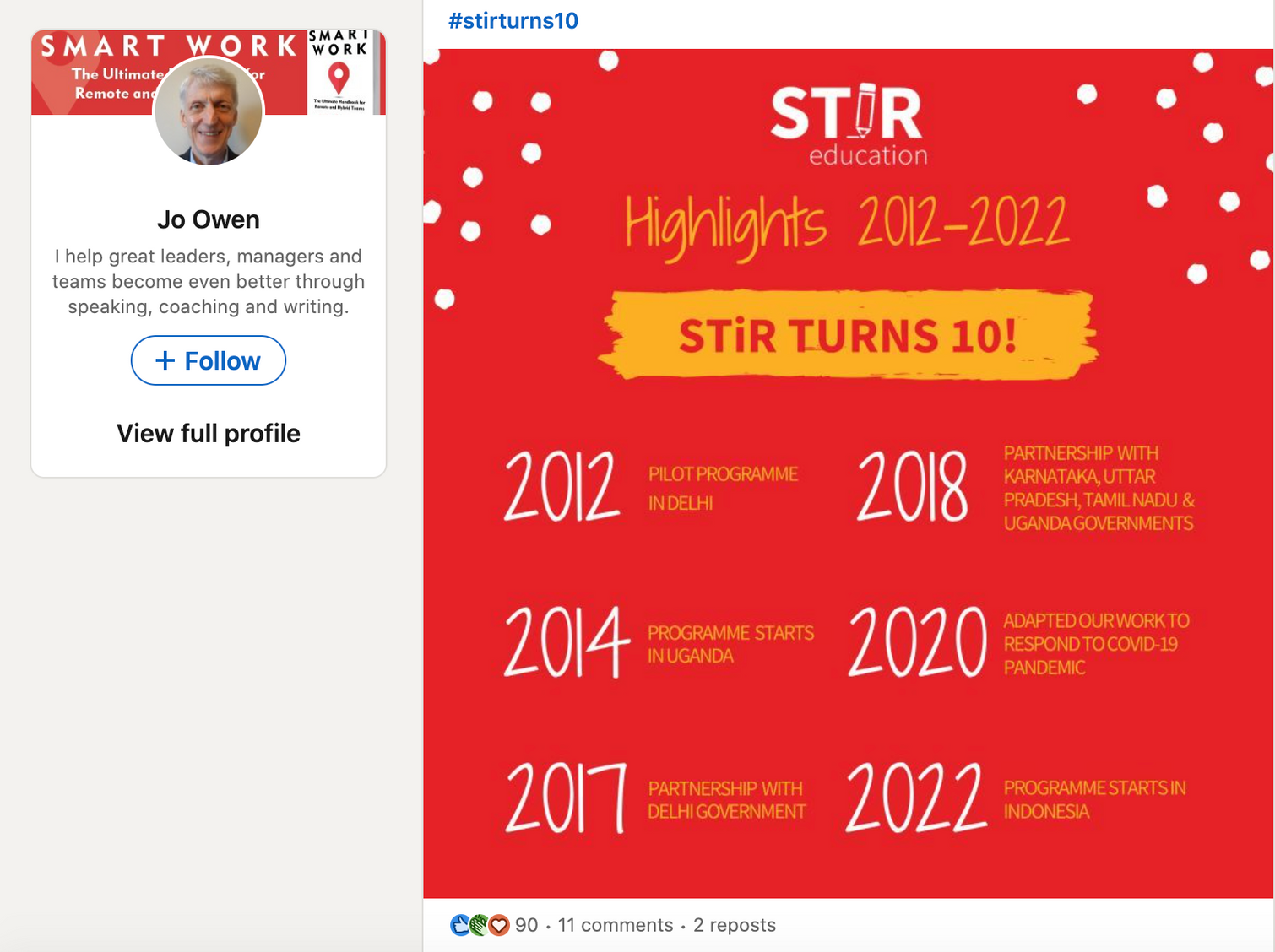
“Our engagement particularly on LinkedIn was higher than ever, with one post receiving a record 240 likes.”
1. An understanding of the types of content that stakeholders like and engage with.
Knowing your audience well enables you to ensure that your content is meaningful for them. This increases the likelihood that your audience will share your content, helping to raise your profile, and bring new audiences to you.
2. High engagement from stakeholders who were re-tweeting, particularly on Twitter.
Engaging your existing stakeholders is vital - they are your biggest advocates, so it’s worth undertaking some experiments so that you can have confidence that they are interested in what you’re sharing.
3. Increased traffic to website and social accounts
Thanks to the high engagement from stakeholders, who were reposting content about the anniversary, they increased traffic to their online presence. Their anniversary video had more than 300 views in just three weeks. This is great for awareness raising, and this technique could also be used to optimise a fundraising campaign.
4. Increased engagement and commenting on posts
Comments on your posts demonstrate that people are genuinely interested in what you are posting and help to generate further interest - a virtuous cycle.
Top tips for event-based social campaigns
- Don’t be afraid to experiment - knowing what works for your audience is invaluable
- Use videos and photos as well as written reports / content
- Tying your campaign to a single day / event doesn’t limit you to posting on that day - do a warm-up, live updates on the day, and then reflection afterwards
- Try to include the handles of the people featured in video or photo content - this empowers them to act as advocates within their community
- Don’t lose your new audience after the event! Plan how to keep them engaged and steward them to becoming part of your core community.
“Getting a sense of some of the users who are doing that the most, and thinking about whether there's anything we want to do to specifically target them and harness their engagement in our work.”
Sign up for our newsletter
If you want to stay up-to-date with blogs, articles, and events in the nonprofit and philanthropy space, make sure you subscribe to our newsletter.
Latest articles
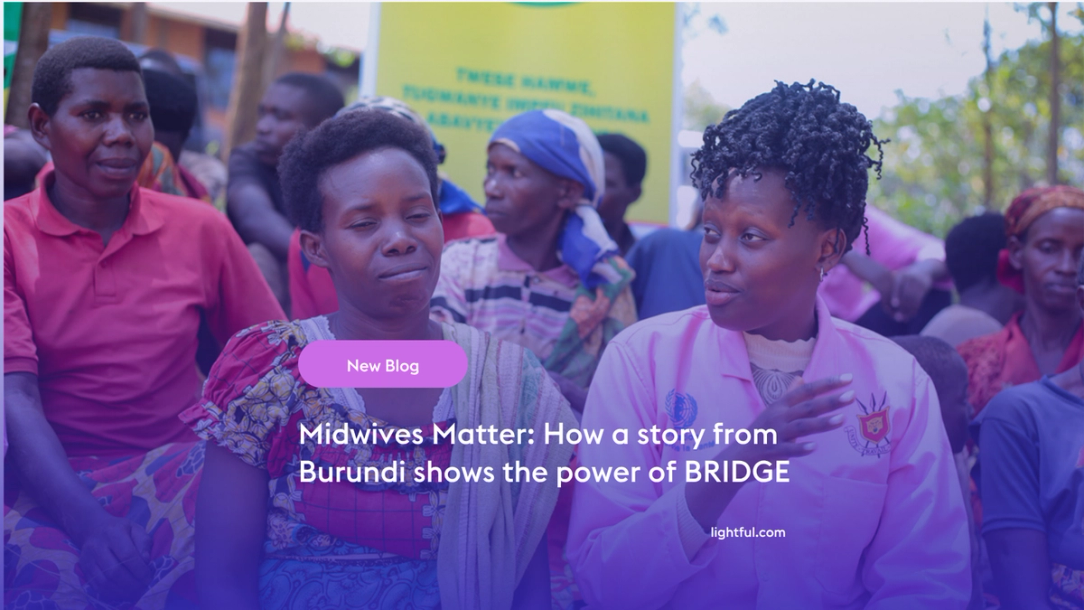
Over the past year, Lightful and the International Confederation of Midwives (ICM) have supported Midwives Associations across Africa, South Asia and the Eastern Mediterranean to build their digital confidence through our BRIDGE programme. These organisations were starting from very different places, but all shared the same goal: to use digital tools to strengthen their voice, raise their visibility and advocate for better outcomes for women and babies.
Related posts
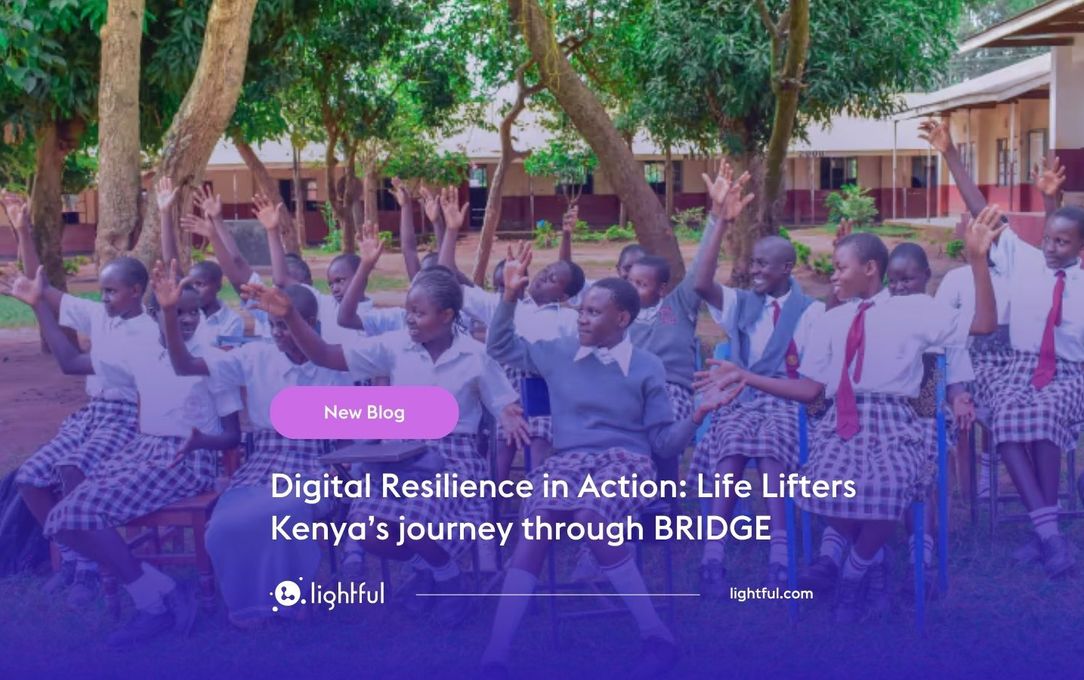
In today’s rapidly evolving digital landscape, the ability to engage online is a necessity. For nonprofits, especially those working in underserved regions or tackling complex social issues, digital tools can be the bridge between intention and impact. Whether it’s reaching new donors, advocating for policy change, or delivering services, digital capacity enables organisations to scale their mission and deepen their impact. Yet many grassroots organisations remain digitally under-resourced. That’s why Lightful created the BRIDGE programme - Building Resilience in Digital Growth and Engagement - to empower nonprofits with the skills, confidence, and strategies to thrive in the digital age and build lasting change.
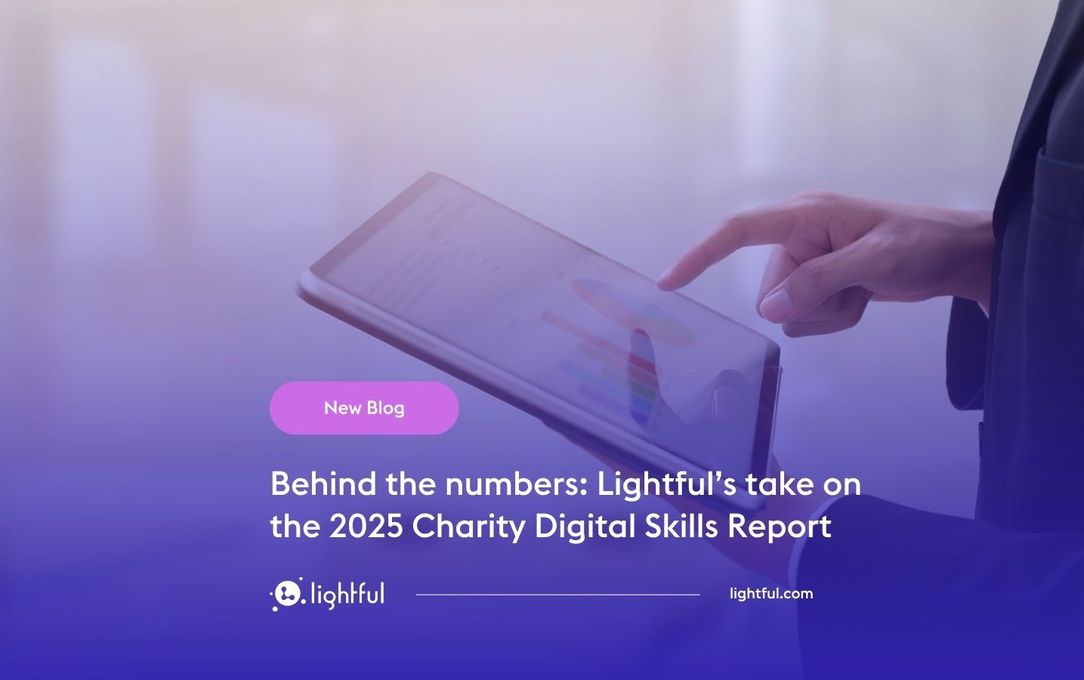
Advancing digital maturity: what Lightful has learned from supporting 3,500 charities globally
See who we help
Contact us
Want to learn more?
Email Jonathan and start a conversation






